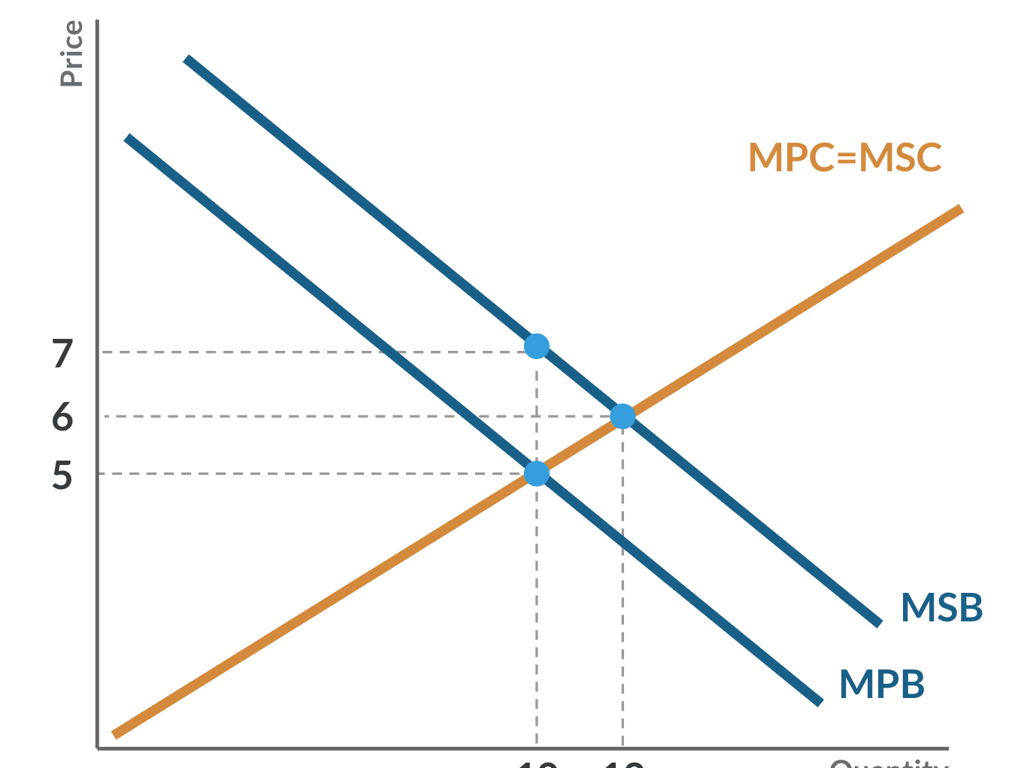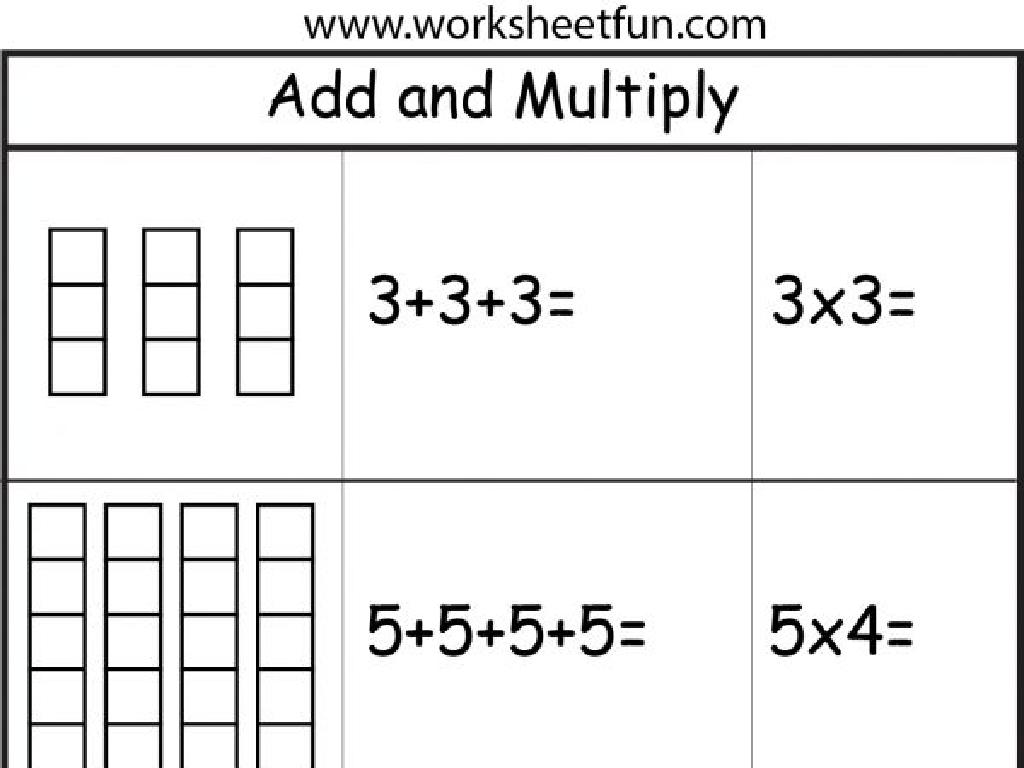Identify Proportional Relationships From Tables
Subject: Math
Grade: Sixth grade
Topic: Proportional Relationships
Please LOG IN to download the presentation. Access is available to registered users only.
View More Content
Identifying Proportional Relationships from Tables
– Proportions in daily life
– Examples: recipes, map scales
– Defining proportional relationships
– A relationship where two ratios are equal
– Exploring tables for proportions
– Look for equal ratios in rows/columns
– Today’s goal: Identify proportions
|
This slide introduces the concept of proportional relationships by connecting it to everyday examples, such as following a recipe or using a map scale. It’s crucial to define proportional relationships clearly, emphasizing that they involve two ratios that are equal. Students will learn to identify these relationships by examining tables and looking for consistent ratios across rows or columns. The goal for today’s lesson is for students to be able to recognize and confirm proportional relationships in various tables. Encourage students to think of other areas in their lives where proportions are present and to bring those examples to class for discussion.
Understanding Proportions
– Define a proportion
– A proportion is an equation stating two ratios are equal.
– Real-life proportion examples
– Recipes in cooking or mixing drinks, buying in bulk.
– Proportion vs. non-proportion
– Compare two ratios to see if they form a proportion.
– Practice identifying proportions
|
Begin the lesson by defining proportion as an equation that shows two ratios are equivalent. Use relatable examples such as recipes or buying items in bulk to illustrate proportions in real life. Explain how to determine if two ratios form a proportion by using cross-multiplication. Provide students with tables of values and guide them to spot the difference between proportional and non-proportional relationships. Encourage students to practice with examples and prepare a few exercises where they can apply their knowledge to identify proportions from given tables.
Exploring Tables for Proportional Relationships
– Understanding tables
– A table organizes data in rows and columns for analysis
– Rows and columns in tables
– Rows run horizontally; columns run vertically
– Tables and proportional relationships
– Proportions are seen when values in rows/columns have a constant ratio
– Practice with real examples
– Use tables from real-life scenarios to find proportional relationships
|
This slide introduces students to the concept of tables as a tool for organizing data and identifying proportional relationships. Begin by explaining what a table is and its parts, emphasizing the role of rows and columns. Then, guide students to understand how tables can be used to spot proportional relationships by looking for a constant ratio between corresponding values. Provide examples of tables that represent proportional relationships, such as recipes or speed-time relationships. Encourage students to practice with tables from real-life scenarios to strengthen their understanding. The goal is for students to become comfortable with tables and to use them as a tool to identify and understand proportions in various contexts.
Identifying Proportional Relationships
– Understand constant of proportionality (k)
– ‘k’ is the ratio that is consistent across a table representing a proportional relationship.
– Finding ‘k’ in tables
– To find ‘k’, divide the y-value by the x-value for any pair of numbers in the table.
– Examples of ‘k’ in tables
– Look at tables with different values to identify ‘k’ and understand its significance.
– Practice with diverse tables
|
This slide introduces the concept of the constant of proportionality, a fundamental aspect of understanding proportional relationships in tables. Students will learn that ‘k’ represents the consistent ratio between two quantities. The slide will guide students on how to find ‘k’ by dividing the second value by the first value in any given pair of the table. By providing examples, students will practice identifying ‘k’ in various tables, reinforcing the concept. Encourage students to work through several tables to become comfortable with the process. The goal is for students to recognize proportional relationships and the constant of proportionality in different contexts.
Practice Time: Identifying Proportional Relationships
– Understanding proportional relationships
– Proportional relationships have a constant ratio between quantities.
– Analyze the provided tables
– Look at the tables and compare the ratios of corresponding values.
– Determine if relationships are proportional
– Use the constant of proportionality to decide if the tables show proportional relationships.
– Share findings with the class
|
This slide is designed for a class activity where students will apply their knowledge of proportional relationships to analyze data tables. Begin by reviewing the concept of proportional relationships, emphasizing that they have a constant ratio between quantities. Provide students with tables containing pairs of values and guide them to compare the ratios of corresponding values to determine if they are consistent. Teach them to find the constant of proportionality (k) and use it to decide if the relationships in the tables are proportional. After the activity, encourage students to share their findings with the class to foster a collaborative learning environment. Possible activities include comparing quantities in recipes, distances on a map, or prices of bulk items.
Real-World Application: Proportions in Planning
– Proportions in shopping
– Compare prices and quantities to get the best deals
– Budgeting with tables
– Create a table to track party items and costs
– Group activity: Plan a party menu
– Work together to choose items that fit a given budget
– Use proportions to stay on budget
– Apply proportional relationships to adjust quantities and costs
|
This slide aims to show students how proportional relationships are used in everyday life, such as shopping and budgeting for events. Start by discussing how to compare different products based on price and quantity to find the best value, using proportions. Then, demonstrate how to use a table to organize and plan a party within a budget, ensuring the cost of items remains proportional to the total budget. For the group activity, students will collaborate to plan a menu for a party, using proportional relationships to adjust the quantity of food items to meet a specific budget constraint. This will help them understand the practical application of proportions in real-life scenarios. Provide guidance on how to create and interpret tables, and encourage students to discuss their strategies with the class.
Class Activity: Crafting Proportional Tables
– Create a table showing proportionality
– Pick a real-world scenario
– Could be related to cooking, shopping, etc.
– Explain your table’s proportional relationship
– How does one value change with another?
– Share your findings with the class
|
This activity is designed to help students understand proportional relationships through hands-on experience. Students will create their own tables based on a scenario they choose, which could be anything from ingredients in a recipe to the cost of items when shopping. The key is for them to identify how quantities relate to each other in a proportional manner. For example, if buying fruit, how does the total price change with the weight? Once they’ve created their tables, they’ll explain how they determined the relationships were proportional, reinforcing their understanding. Encourage creativity and ensure they can articulate the concept of proportionality clearly. Possible activities: 1) Recipe ingredient adjustments, 2) Sports statistics analysis, 3) Classroom supplies inventory, 4) Book pages vs. days to read.
Conclusion & Homework: Proportional Relationships
– Recap of proportional relationships
– Why they matter in real life
– Understanding proportions is key in many fields, like cooking or building.
– Homework: Analyze a real-world table
– Find a table in a newspaper or magazine and decide if the relationship is proportional.
– Be ready to discuss your findings
– Think about what makes a relationship proportional and be prepared to explain.
|
As we wrap up today’s lesson on proportional relationships, it’s crucial for students to understand how these concepts apply to real-world scenarios. Proportional relationships are everywhere, from recipes to construction plans, and being able to identify them is a valuable skill. For homework, students are tasked with finding a table in a newspaper or magazine, analyzing the data, and determining if it represents a proportional relationship. This exercise will help reinforce their understanding and allow them to apply what they’ve learned in a practical context. In the next class, we’ll discuss their findings, which will help them articulate their understanding and learn from different examples brought in by their peers.




